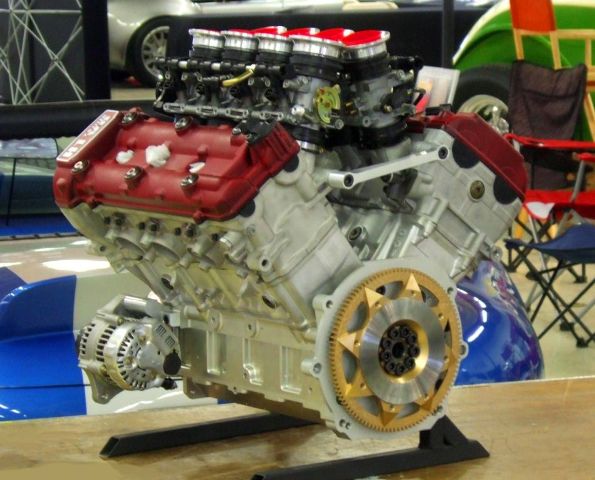Hartley integrates the cylinders and heads from two Suzuki Hayabusa engines to a custom billet crankcase and cam drive. Click here for more images / history etc.


Does a flat-plane V8 need counterweights this large though? I thought flat plane V8s were balanced in the first order but not in the second, eliminating the need for full counterweighting. The counterweights on this crank look like those on a crossplane crank... can one of the balance gurus chime in?
The large gear on the back of the crank drives a 1:1 gear which itself has an integrated 2:1 reduction sprocket to drive the cams on one bank. This accomplishes the reverse rotation required by the "backward-facing" head without the need for custom ground cams.














